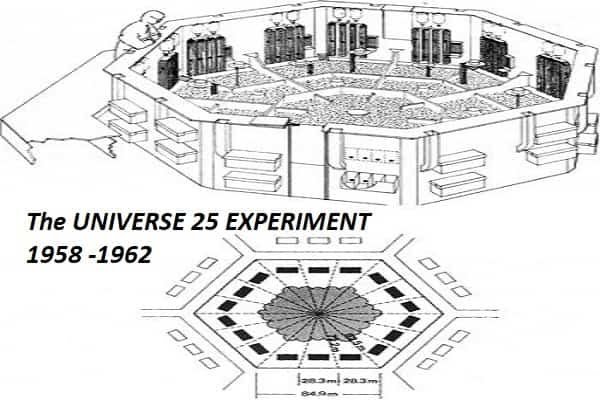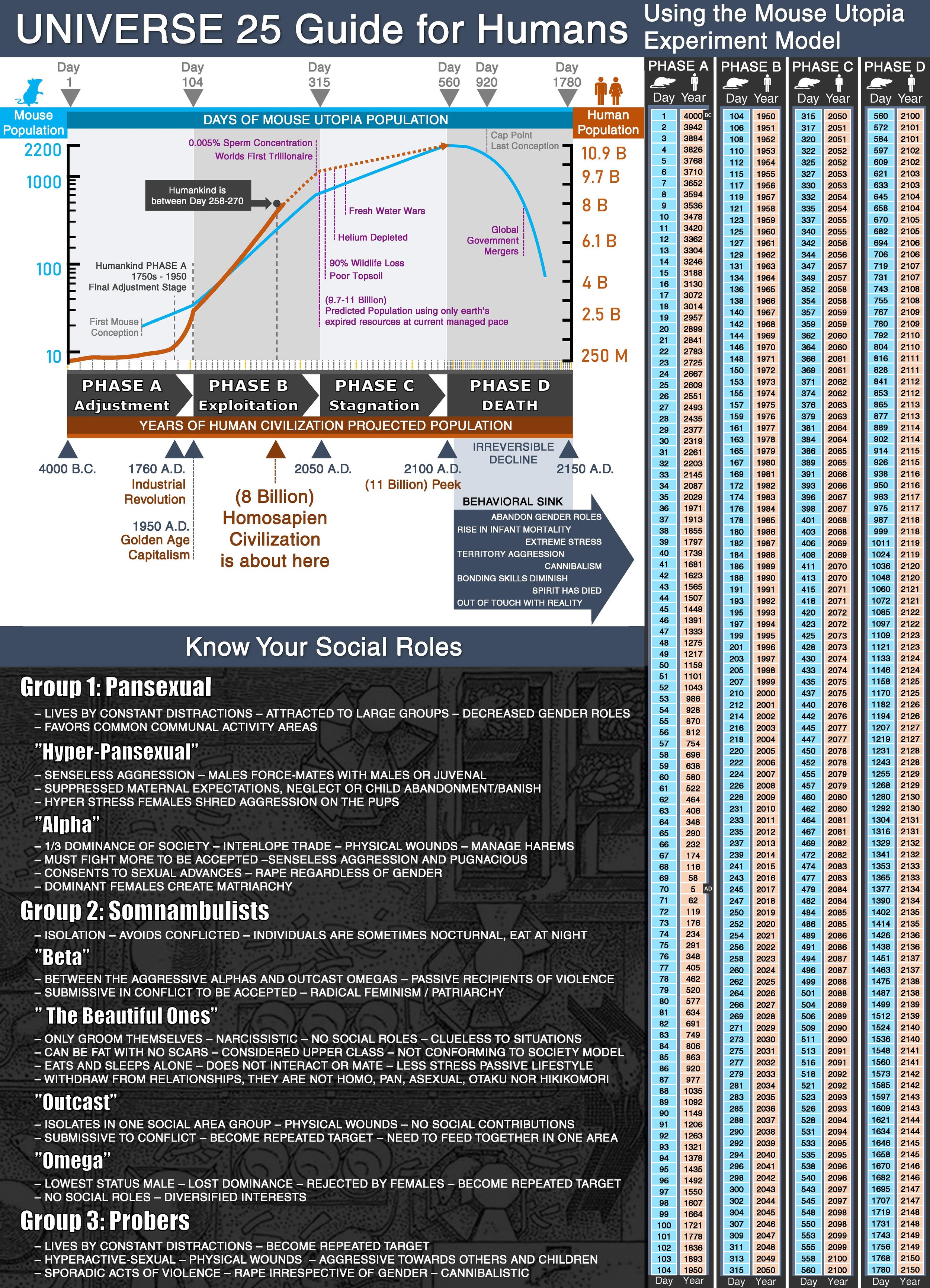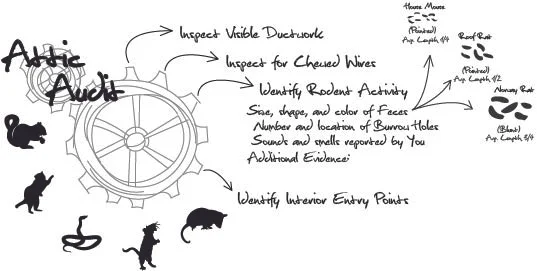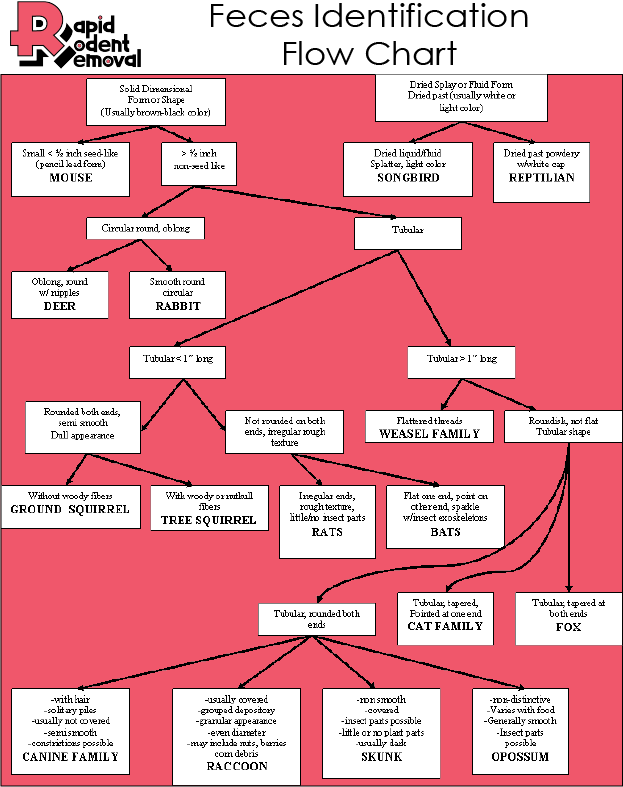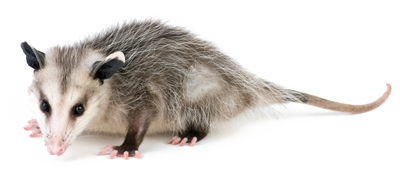Universe 25 Experiment
Universe 25
1. Introduction
Universe 25 was a famous experiment conducted by American ethologist John B. Calhoun in the 1960s and 1970s. This experiment aimed to understand the effects of overpopulation on social behavior in rodents. The study's findings have been used to explore potential consequences of human overpopulation and resource depletion.
1.1. Brief on John Calhoun's experiment
John Calhoun designed a utopian environment for rodents called "Universe 25," providing ample food, water, and nesting material. The study aimed to observe how the population would grow and change in such ideal conditions.
2. The Creation of Universe 25
2.1. Structure and design
Universe 25 was a 9-square-foot enclosure, divided into four interconnected pens. Each pen had food hoppers and water dispensers, and nesting boxes were available on each level. The enclosure was designed to house up to 5,000 mice, providing them with everything they needed for survival.
2.2. Initial population
Calhoun introduced four pairs of healthy, young mice into Universe 25. With abundant resources and no predators, the population was expected to grow exponentially.
3. The Four Phases of Universe 25
Universe 25's development was divided into four distinct phases: Strive, Exploit, Equilibrium, and Decline.
3.1. Strive
During the Strive phase, the mouse population adapted to their new environment and began to reproduce. The population doubled every 55 days, and social hierarchies began to form.
3.2. Exploit
In the Exploit phase, the population continued to grow, and the mice started to exploit the available resources fully. The population doubled every 32 days, and the first signs of social stress began to emerge.
3.3. Equilibrium
As the population reached its peak, the Equilibrium phase began. The growth rate slowed down, and the population began to stabilize. During this phase, behavioral changes started to appear, indicating social distress.
3.4. Decline
In the Decline phase, the population started to decrease, and the social structure broke down entirely. Despite
ample resources, the population plummeted, and the mice failed to recover their social cohesion.
4. Behavioral Changes Observed in Universe 25
As the experiment progressed, several alarming behavioral changes were observed among the mice.
4.1. Social breakdown
Overcrowding led to a breakdown in social structures. Mice became more aggressive, and their interactions became increasingly hostile. Mothers abandoned their young, and infanticide became rampant.
4.2. Violence and aggression
As the population grew, competition for space and social standing increased, leading to more violent behavior. Mice attacked each other, causing injuries and even death.
4.3. The Beautiful Ones
Some mice, dubbed "The Beautiful Ones," withdrew from society and focused solely on grooming and eating. They showed no interest in reproduction, further contributing to the population decline.
5. Implications of Universe 25 on Human Society
Although it is essential to recognize the differences between mice and humans, Universe 25's findings can serve as a warning for potential consequences of overpopulation and resource depletion in human societies.
5.1. Overpopulation and resource management
As populations grow, competition for resources such as food, water, and space intensifies. If not managed properly, this could lead to social unrest, violence, and a breakdown in societal structures.
5.2. Social isolation and mental health
Universe 25 showed that overcrowding could lead to social isolation and mental health issues. In human societies, increased population density may contribute to feelings of loneliness, stress, and depression.
5.3. Lessons learned
Universe 25 serves as a reminder of the importance of sustainable development, resource management, and the need to address social issues arising from overpopulation.
6. Conclusion
Universe 25 was a groundbreaking experiment that demonstrated the consequences of overpopulation on social behavior. Although the findings cannot be directly applied to human society, they provide valuable insights into the potential outcomes of unchecked population growth and resource consumption. By learning from Universe 25, we can work towards creating a more sustainable and socially stable future.
7. FAQs
Q1: What was the purpose of Universe 25?
A1: The purpose of Universe 25 was to study the effects of overpopulation on social behavior in rodents, specifically mice, in a controlled environment.
Q2: How did overcrowding affect the mice in Universe 25?
A2: Overcrowding led to a breakdown in social structures, increased aggression and violence, infanticide, and the emergence of the "Beautiful Ones," who withdrew from society and focused on self-grooming and eating.
Q3: Can the findings of Universe 25 be directly applied to human society?
A3: Although there are significant differences between mice and humans, Universe 25 provides valuable insights into the potential consequences of overpopulation and resource depletion in human societies.
Q4: What lessons can we learn from Universe 25?
A4: Universe 25 highlights the importance of sustainable development, resource management, and addressing social issues resulting from overpopulation to create a more stable and harmonious society.
Q5: Who conducted the Universe 25 experiment?
A5: American ethologist John B. Calhoun conducted the Universe 25 experiment in the 1960s and 1970s.
Lessons from Calhoun's Rodent Utopia: What Humanity Can Learn from Rodent Societies
Overview of Calhoun's Rodent Utopia Experiment
John B. Calhoun, an American ethologist, conducted a series of experiments in the 1960s and 1970s to observe the effects of overpopulation in rodents. He created a utopian environment, termed "Rodent Utopia," where rodents had access to unlimited food, water, and nesting materials. The purpose of these experiments was to explore the behavioral changes and social dynamics that emerged due to population density.
The Four Phases of Calhoun's Rodent Utopia
Phase 1: Exploration and Establishment
In the first phase of the experiment, the rodent population began to explore the utopia and establish territories. Mating and reproduction occurred at a normal rate, and the population grew steadily. Social structures, such as dominance hierarchies, formed as rodents settled into their new environment.
Phase 2: Rapid Growth and Expansion
During the second phase, the rodent population experienced rapid growth. The abundance of resources allowed for a high reproduction rate, leading to overcrowded conditions. As the population density increased, the rodents faced increased competition for resources and territories.
Phase 3: Stagnation and Decline
The third phase marked a turning point in the experiment, as the population began to plateau. Social structures started to break down, with aggressive behavior increasing among males and females exhibiting neglectful parenting. This led to a decline in the overall health and well-being of the rodents.
Phase 4: Collapse and Extinction
In the final phase, the rodent society collapsed, and the population entered a state of extinction. With no new offspring, the remaining rodents faced increased social isolation and abnormal behaviors, ultimately leading to the end of the utopia.
Key Lessons for Humanity from Calhoun's Rodent Utopia
Lesson 1: The Importance of Sustainable Resource Management
One of the most important takeaways from Calhoun's Rodent Utopia is the need for sustainable resource management. The experiment highlights the dangers of unchecked population growth and the resulting strain on resources. By practicing sustainable resource management, humans can avoid the pitfalls of overconsumption and promote a balanced, healthy society.
Lesson 2: The Significance of Social Structures
Calhoun's experiments demonstrate the essential role of social structures in maintaining a stable society. As social structures broke down, the rodent society collapsed, emphasizing the importance of nurturing and maintaining healthy relationships and social connections in human societies.
Lesson 3: The Consequences of Overpopulation
The experiment serves as a stark reminder of the consequences of overpopulation. As resources become scarce and competition increases, the quality of life for individuals declines. This lesson underscores the importance of addressing global population growth and promoting responsible family planning.
Introduction: "Universe 25: The Intricate Maze of Society" delves into the intricate and complex world of social interactions, hierarchies, and the consequences of overpopulation within confined environments. This book is inspired by the famous scientific experiment conducted by American ethologist John B. Calhoun in the 1960s and 1970s, which aimed to investigate the impact of overpopulation on social behavior in rodents. The experiment was conducted in a controlled environment, referred to as "Universe 25," wherein a colony of mice was provided with unlimited resources, yet faced the constraints of limited living space.
The findings of the experiment were both fascinating and alarming. As the population of mice increased exponentially, their social structure began to break down. Aggression and violence became rampant, while instances of cannibalism and infant mortality soared. Ultimately, the once-thriving community succumbed to extinction, providing a chilling cautionary tale for human societies.
Throughout this article, we will explore the various factors that contributed to the disintegration of the social order in Universe 25. We will examine the role of hierarchies and social dynamics in shaping the behavior of individuals within the community, as well as the effects of resource abundance on population growth and social cohesion. We will also delve into the psychology of confinement and adaptation, investigating how the mice coped with the ever-changing environment and their eventual downfall.
"Universe 25: The Intricate Maze of Society" offers a compelling and thought-provoking examination of the delicate balance that underpins our social systems. Through the lens of this groundbreaking experiment, we will learn valuable lessons about our own societies and the importance of sustainable living in preserving social order and harmony.
Chapter 1: Unveiling the Secrets of Universe 25
Introduction to John B. Calhoun and his work in behavioral sciences
Overview of the Universe 25 experiment a. Goals and objectives b. Setup and design of the controlled environment
Initial observations of the mice population a. Social behavior and harmony b. Growth and expansion
Key events that led to the breakdown of the social structure
Significance of the Universe 25 experiment in understanding social behavior and population dynamics
Chapter summary and transition to the next chapter
Chapter 1: Unveiling the Secrets of Universe 25
Introduction to John B. Calhoun and his work in behavioral sciences
John B. Calhoun, born in Elkton, Tennessee in 1917, was an American ethologist and behavioral scientist who dedicated much of his career to studying the social behavior of rodents. His groundbreaking experiments and observations shed light on the intricacies of animal behavior and the potential consequences of unchecked population growth in confined environments. Calhoun's work, though conducted primarily on rodents, has had a profound impact on our understanding of human societies and the delicate balance that underpins social structures.
Calhoun earned his Bachelor of Science degree in Zoology from Northwestern State University in Louisiana, followed by a Master's and Ph.D. from the University of Tennessee. His academic pursuits laid the foundation for his research career, as he became increasingly interested in understanding the impact of population density on animal behavior. He began conducting experiments using Norway rats in the late 1940s, observing how the rodents' behavior changed as their population grew in enclosed spaces.
Throughout the 1950s and 1960s, Calhoun continued to develop his experimental designs, refining his methods and expanding his focus to include mice as subjects. It was during this period that he conceptualized the idea of the "behavioral sink," a term used to describe the collapse of social structures and the deterioration of individual behavior in response to overcrowding.
His most famous experiment, Universe 25, began in the late 1960s and was conducted at the National Institute of Mental Health. Universe 25 was designed to examine the effects of overpopulation on social behavior in a controlled environment, where a colony of mice was provided with unlimited resources yet faced the constraints of limited living space. This experiment garnered widespread attention for its striking findings and the implications it held for understanding the consequences of overpopulation in human societies.
As we delve deeper into the story of Universe 25, we will explore the goals and objectives behind the experiment, the setup and design of the controlled environment, and the initial observations that Calhoun made as the mice population began to grow. We will also discuss the key events that led to the breakdown of the social structure within the colony, as well as the significance of Calhoun's work in shaping our understanding of social behavior and population dynamics.
In this chapter, we embark on a journey to uncover the secrets of Universe 25 and the intricacies of social behavior that unfold within its confines. By examining the work of John B. Calhoun and the groundbreaking experiment he conducted, we will gain valuable insights into the delicate balance that underpins our own societies and the potential consequences of unchecked growth in confined environments.
Chapter 2: The Birth of a Utopia
The design and construction of Universe 25 a. The physical layout and compartments b. The provision of unlimited resources (food, water, nesting materials)
The introduction of the mice a. Selection criteria and initial population size b. Monitoring and recording methods used by Calhoun and his team
Observations of early social harmony and prosperity a. Establishment of territories and social roles b. Reproduction and population growth
Factors contributing to the initial success of the colony a. Abundance of resources b. Absence of predators and external threats
The illusion of a utopian society a. Addressing potential criticisms of the experiment b. Limitations of comparing the mice colony to human societies
Chapter summary and transition to the next chapter
John B. Calhoun designed Universe 25 as a utopia for mice, providing them with everything they could possibly need for survival and growth. The environment consisted of a large, square enclosure divided into four connected compartments, each designed to accommodate the mice's nesting and social needs. The compartments had ramps and platforms, creating a multi-level living space that enabled the mice to establish territories and interact with one another.
To ensure the success of the experiment, Calhoun provided the mice with unlimited access to food, water, and nesting materials. This allowed the mice to reproduce and grow their population without being constrained by resource scarcity. In addition, the absence of predators and external threats allowed the mice to focus on social behaviors and interactions without the constant pressure of survival.
Calhoun and his team carefully selected the initial group of mice to introduce into Universe 25, starting with a small population to observe their growth and social behaviors. They employed rigorous monitoring and recording methods to document the changes in the mice's behavior and population dynamics over time.
In the early stages of the experiment, the mice colony appeared to thrive. The rodents quickly established territories and formed social hierarchies, with each individual assuming a specific role within the community. Reproduction rates were high, and the population began to grow rapidly.
The initial success of the mice colony in Universe 25 could be attributed to several factors. The abundance of resources and the absence of predators created an environment in which the mice were free to reproduce and focus on social behaviors without being constrained by external threats or resource scarcity. In many ways, Universe 25 appeared to be a utopia for the mice, a society in which they could flourish without limitations.
However, as we will see in the chapters to come, this apparent utopia was not without its flaws. Critics of the experiment argue that the artificial nature of Universe 25 makes it difficult to draw direct parallels between the mice colony and human societies. Additionally, the absence of external pressures that would typically impact population growth in the wild raises questions about the validity of the experiment's findings.
Despite these criticisms and limitations, the lessons learned from Universe 25 offer valuable insights into the delicate balance that underpins social structures and the potential consequences of unchecked population growth. In the next chapter, we will delve deeper into the social dynamics of Universe 25, examining the emergence of hierarchies and the complexities of social interactions within the colony.
Chapter 3: The Emergence of Hierarchies and Social Dynamics
The formation of social hierarchies a. Dominant and subordinate mice b. The role of gender in establishing social status
Social dynamics within the colony a. Territorial behaviors and disputes b. Mating patterns and the impact on population growth
The consequences of hierarchical structures a. Stress and anxiety among subordinate mice b. The emergence of aggressive behaviors
The role of social organization in population control a. The establishment of territories as a natural mechanism for population regulation b. The breakdown of territories as population increases
Early warning signs of social instability a. Overcrowding and the impact on individual behavior b. Changes in reproductive behaviors and infant mortality rates
Chapter summary and transition to the next chapter
As the mice population in Universe 25 continued to grow, the colony began to develop distinct social hierarchies. Some mice emerged as dominant members of the community, securing the best nesting sites and resources for themselves and their offspring. Others, often less fortunate in their access to resources, assumed subordinate roles within the hierarchy. Interestingly, gender played a significant role in determining the social status of individual mice, with males often engaging in aggressive behaviors to assert their dominance over others.
The social dynamics within the colony were intricate and complex. Mice exhibited territorial behaviors, with dominant individuals defending their spaces against intruders and subordinate mice seeking to establish their own territories. Mating patterns also began to shift, with dominant males monopolizing access to females, which in turn impacted population growth within the colony.
However, the establishment of hierarchical structures came with consequences. Subordinate mice, often subjected to aggressive behaviors from their dominant counterparts, experienced heightened levels of stress and anxiety. As a result, aggressive behaviors began to emerge throughout the colony, leading to frequent disputes and skirmishes over territory and resources.
In many ways, the formation of social hierarchies and territorial behaviors served as a natural mechanism for population control. By defending and maintaining their territories, the mice inadvertently limited the growth of their population by restricting access to resources and mating opportunities. However, as the population continued to increase, the territorial boundaries that once provided stability began to break down, leading to overcrowding and increased competition for space and resources.
These early signs of social instability were further exacerbated by changes in reproductive behaviors and a spike in infant mortality rates. As the colony became more crowded and resources became more scarce, the once harmonious society began to show cracks in its foundations.
In the next chapter, we will explore the consequences of overpopulation in Universe 25, examining the effects of overcrowding on the social structure of the colony and the devastating impact it had on individual behavior and the overall stability of the community.
Chapter 4: Overpopulation and its Consequences
Overcrowding in Universe 25 a. The impact on territorial boundaries and social organization b. Competition for resources and living space
The behavioral sink and social disintegration a. Escalating aggression and violence b. Instances of cannibalism and infant mortality
The psychological effects of overcrowding a. Increased stress and anxiety among the mice b. Withdrawal from social interactions and the emergence of the "beautiful ones"
The impact of social breakdown on reproduction a. Disruptions to mating patterns b. The decline in birth rates and eventual population collapse
The role of environmental constraints in the demise of the colony a. Limited space as a driving factor in social disintegration b. The inability of the mice to adapt to their changing environment
Chapter summary and transition to the next chapter
As the population in Universe 25 continued to grow, overcrowding became a significant issue that would ultimately lead to the colony's downfall. The once clearly defined territorial boundaries began to blur, resulting in a breakdown of social organization and increased competition for resources and living space.
This overcrowding led to a phenomenon that John B. Calhoun termed the "behavioral sink," which was characterized by the disintegration of social structures and a rapid decline in individual behavior. As the population grew, aggression and violence escalated, and instances of cannibalism and high infant mortality rates became increasingly common.
The psychological effects of overcrowding were evident among the mice, with stress and anxiety levels rising as living conditions deteriorated. Many mice began to withdraw from social interactions, focusing solely on self-preservation. Calhoun referred to these socially detached mice as the "beautiful ones," as they spent their time grooming themselves and avoiding conflict, effectively removing themselves from the colony's reproductive pool.
The impact of social breakdown on reproduction was significant, as disruptions to mating patterns and the withdrawal of the "beautiful ones" led to a decline in birth rates. This, in turn, contributed to the eventual collapse of the population, as the colony was no longer able to sustain itself.
A key factor in the demise of Universe 25 was the environmental constraint of limited space. Despite having access to unlimited resources, the mice were unable to overcome the challenges posed by their confined environment. Their inability to adapt to their changing surroundings ultimately led to the disintegration of their social structure and the collapse of their population.
In the next chapter, we will explore the role of resources in shaping the society of Universe 25, examining the effects of resource abundance on population growth, social cohesion, and the ultimate downfall of the colony.
Chapter 5: The Paradox of Abundance
The role of unlimited resources in Universe 25 a. The impact on population growth b. The illusion of a sustainable society
The consequences of resource abundance a. Reduced pressure to adapt and innovate b. The inability to recognize impending threats
The intersection of resource abundance and overcrowding a. The diminishing importance of resources in the face of limited space b. The exacerbation of social tensions
The limitations of resource availability in addressing social issues a. The inability of resources to resolve social disintegration b. The need for a balanced approach to resource management and population control
Lessons from Universe 25 for human societies a. The dangers of relying solely on resource abundance b. The importance of considering social, environmental, and psychological factors in addressing overpopulation
Chapter summary and transition to the next chapter
Universe 25 provided an environment of unlimited resources for its inhabitants, including food, water, and nesting materials. While this abundance allowed the mice population to grow rapidly, it also created an illusion of a sustainable society. As the population increased, the true limitations of their environment – the confined space – began to reveal themselves.
The consequences of resource abundance were twofold. First, the lack of resource scarcity reduced the pressure on the mice to adapt or innovate, as they did not have to compete for essential resources. Second, the abundance of resources made it difficult for the mice to recognize the impending threats posed by overcrowding, as the problems that arose were not directly linked to resource availability.
The intersection of resource abundance and overcrowding resulted in a unique set of challenges. As the population grew, the importance of resource availability diminished in comparison to the pressing issue of limited space. This shift in focus exacerbated social tensions, as the mice began to compete for territory rather than resources.
Resource availability proved to be insufficient in addressing the social issues that emerged within Universe 25. As the colony's social structure disintegrated, the presence of abundant resources could not resolve the underlying problems of overcrowding and social conflict. This highlights the need for a balanced approach to resource management and population control, taking into account not only the availability of resources but also the social, environmental, and psychological factors that contribute to a sustainable society.
The lessons from Universe 25 hold important implications for human societies. Relying solely on resource abundance to sustain a growing population may lead to a false sense of security, as it does not address the underlying social, environmental, and psychological factors that contribute to overpopulation. As we move forward, it is crucial for human societies to consider a holistic approach to population management, taking into account the delicate balance between resource availability, environmental constraints, and social cohesion.
In the next chapter, we will examine the aftermath of the collapse of Universe 25, exploring the potential for recovery and the lasting impacts of the experiment on our understanding of population dynamics and social behavior.
Chapter 6: Aftermath and Lasting Impacts
The potential for recovery in Universe 25 a. Attempts to reestablish social order b. The long-term consequences of social disintegration
The end of the experiment a. The decision to terminate Universe 25 b. The fate of the remaining mice
The lasting impacts of Universe 25 on the study of population dynamics a. The behavioral sink concept and its application to human societies b. The role of environmental constraints in shaping social behavior
Criticisms and limitations of the Universe 25 experiment a. The artificial nature of the environment b. The applicability of the findings to human populations
The enduring legacy of John B. Calhoun and Universe 25 a. The influence of the experiment on subsequent research b. The continued relevance of the study in addressing modern challenges
Chapter summary and conclusion
Following the collapse of the social structure in Universe 25, the potential for recovery within the colony appeared bleak. Although some mice attempted to reestablish social order, the long-term consequences of social disintegration proved too severe to overcome. The damage to the colony's social fabric was extensive, leaving the remaining mice unable to revert to their previous harmonious state.
As a result, the decision was made to terminate Universe 25, bringing the experiment to an end. The remaining mice were removed from the enclosure, and the once-thriving colony ceased to exist.
Despite the tragic outcome of Universe 25, the experiment had lasting impacts on the study of population dynamics and social behavior. Calhoun's concept of the behavioral sink provided valuable insights into the potential consequences of overcrowding in human societies, highlighting the importance of environmental constraints in shaping social behavior.
However, the Universe 25 experiment was not without its critics. Some argued that the artificial nature of the environment made it difficult to draw direct parallels between the mice colony and human populations. Others questioned the applicability of the findings to human societies, as the specific factors contributing to the collapse of Universe 25 might not be directly applicable to human populations.
Nevertheless, the enduring legacy of John B. Calhoun and Universe 25 remains significant. The experiment influenced subsequent research in the fields of behavioral sciences, population dynamics, and urban planning, and its findings continue to inform our understanding of the complex relationship between environmental constraints and social behavior. As the world grapples with the challenges of overpopulation, resource scarcity, and social disintegration, the lessons learned from Universe 25 remain more relevant than ever.
In conclusion, the story of Universe 25 serves as a cautionary tale for humanity, highlighting the delicate balance that underpins social structures and the potential consequences of unchecked population growth. By examining the factors that contributed to the collapse of this seemingly utopian society, we can gain valuable insights into the importance of sustainable resource management and the role of environmental constraints in shaping the future of our own societies.
All About Animals …
Suspendisse nec congue purus. Aenean eu justo sed elit dignissim aliquam. Suspendisse nec congue purus. Class aptent taciti sociosqu ad litora torquent per conubia nostra, per inceptos himenaeos.
RATS
SQUIRRELS
RACCOONS
OPOSSUMS
SNAKES
BATS
WILDLIFE REMOVAL
articles:
What does a rat nest look like ?
What is a Squirrel King



